Tralang monastery is also known as “Chalang Monastery” or “Khra Ling Gonpa”
The monastery was established in 1895 AD and was called “Tashi Chöten Ling” in Tibetan, meaning “Auspicious Island of Dharma.” It is commonly referred to as “Lang-gong.”
It belongs to the Nyingma tradition of Tibetan Buddhism, specifically the Katok lineage. It is a branch monastery of Katok Monastery in Baiyu County, Sichuan Province.
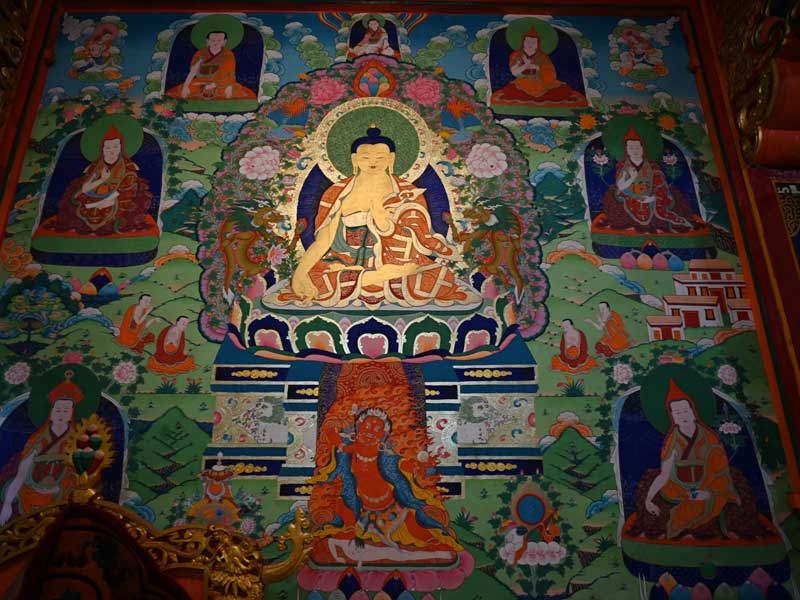
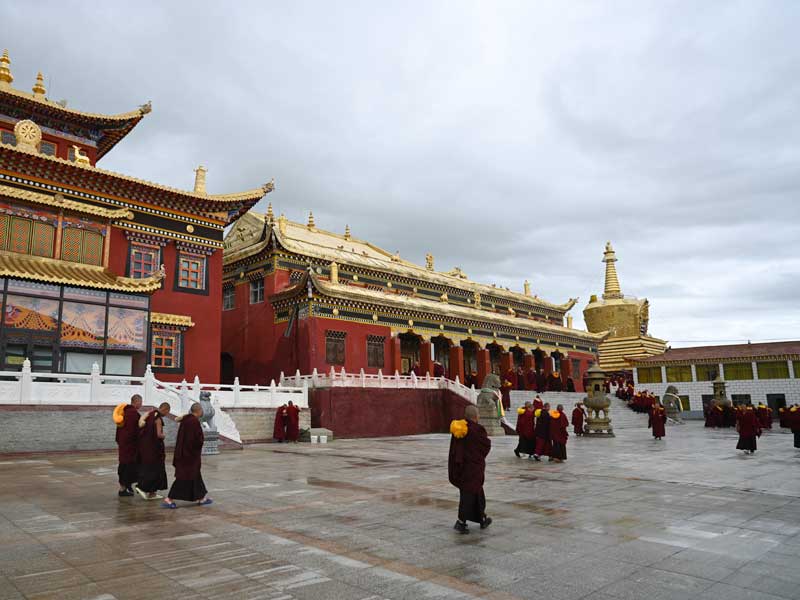

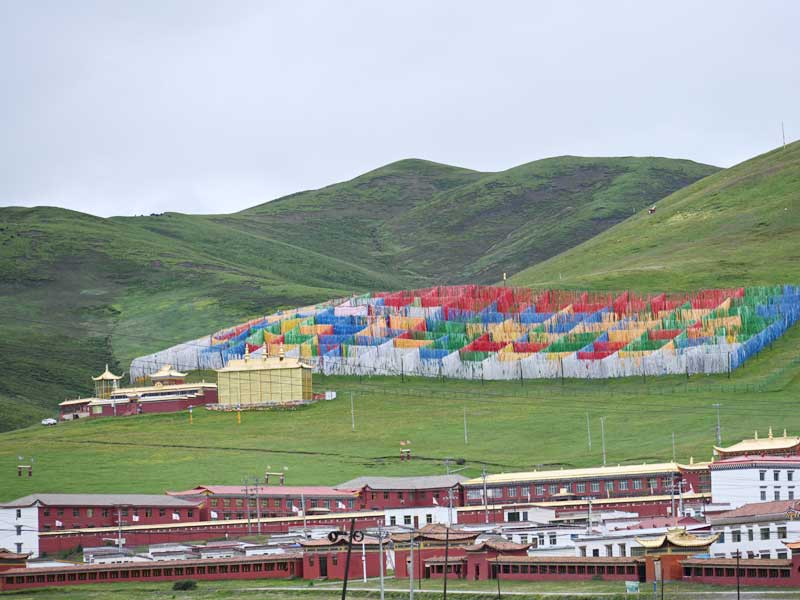
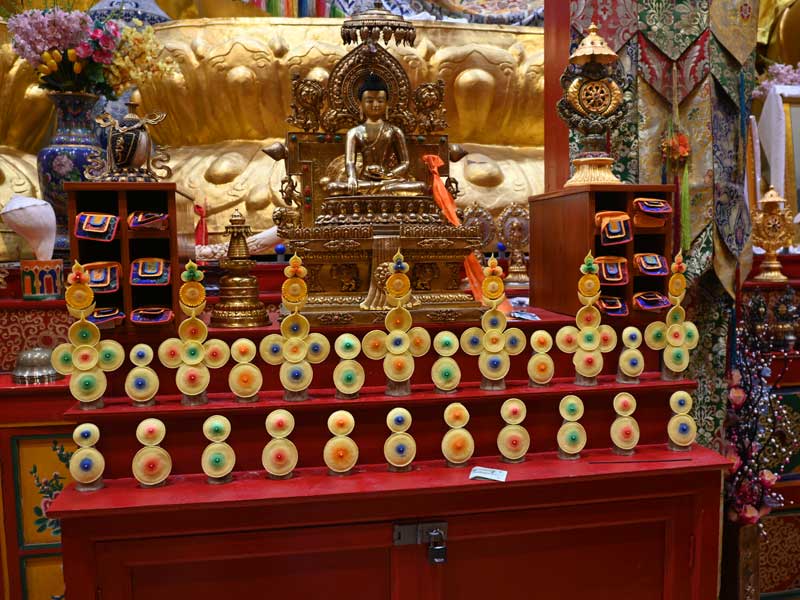
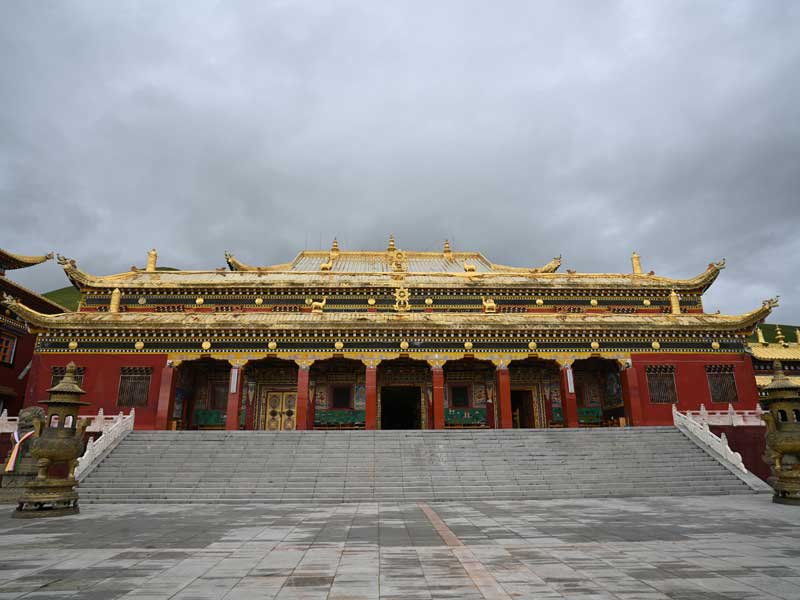
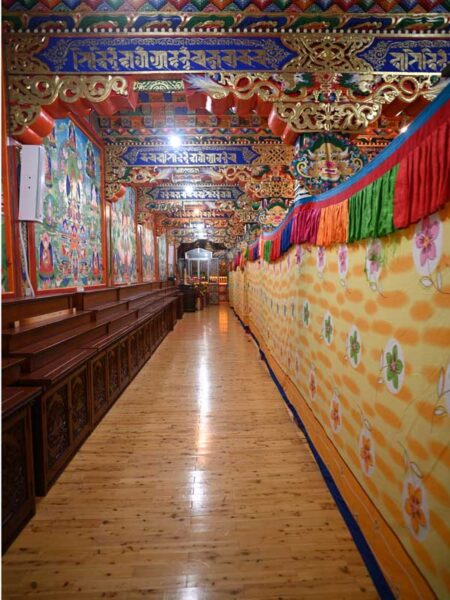
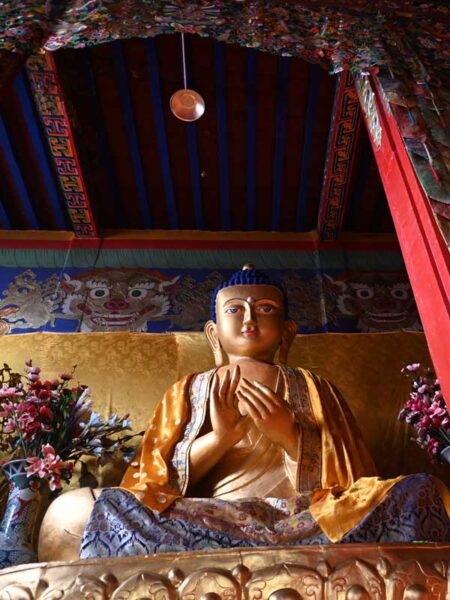
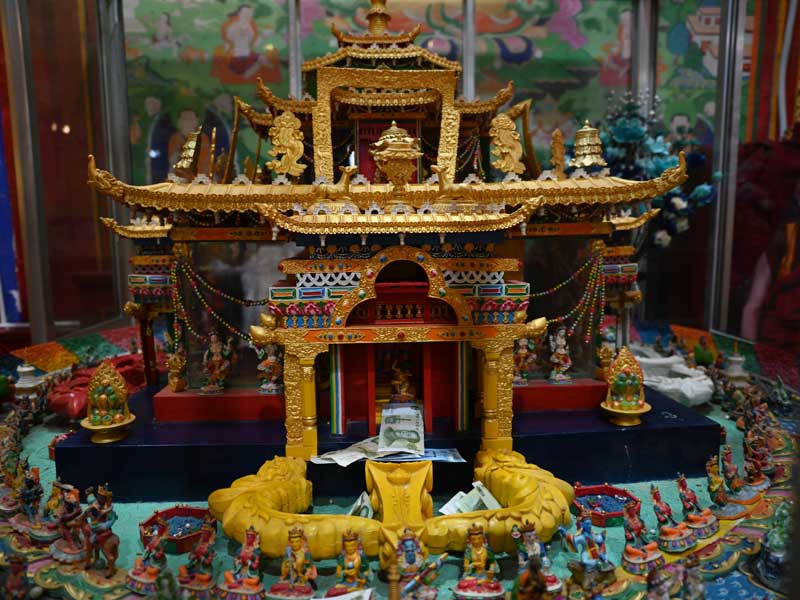
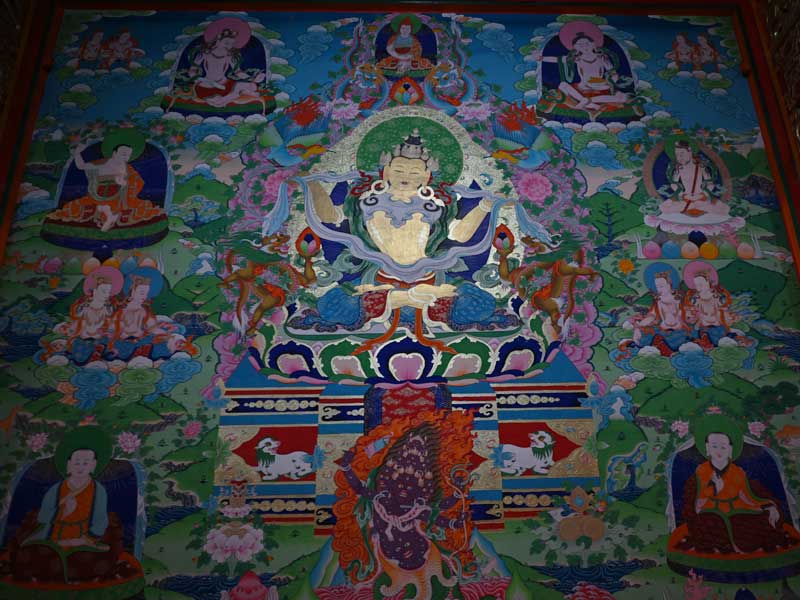


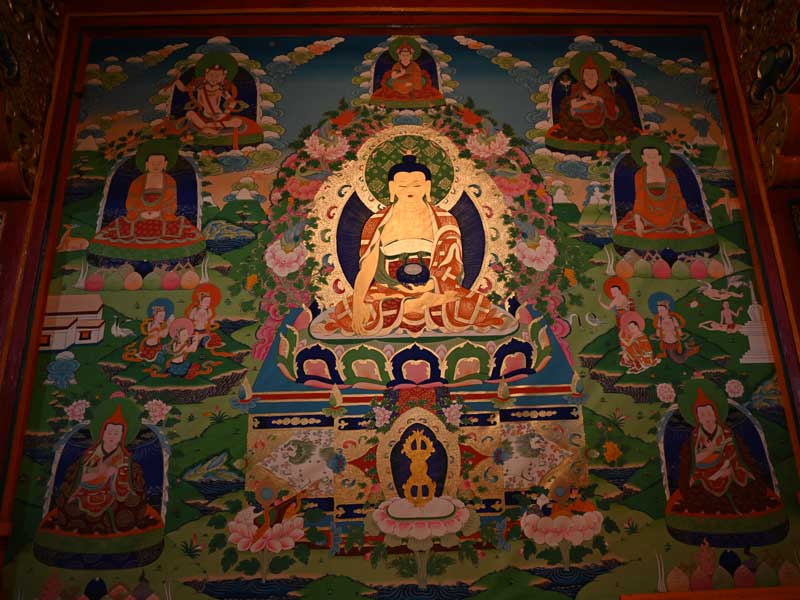
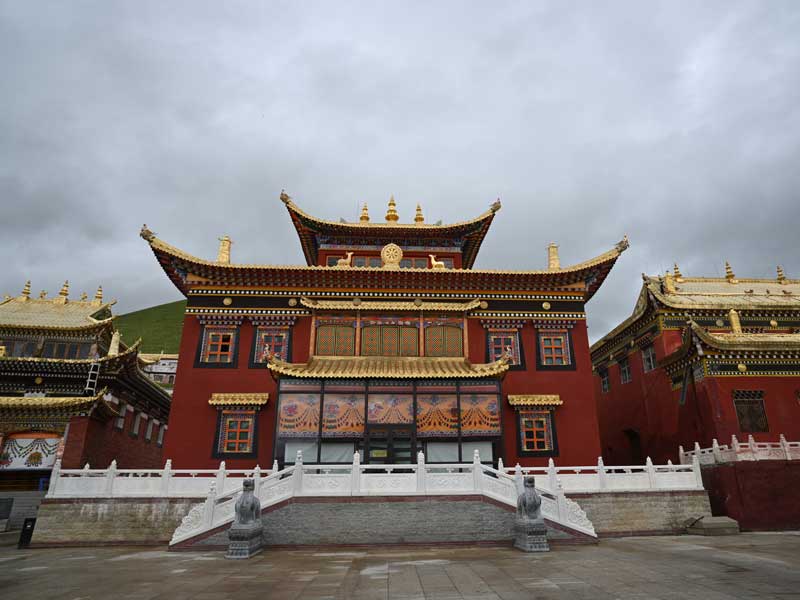
Overview
The monastery is situated with a river in front and mountains behind it. A stream flows in front of the monastery, and to the right stands a massive sky burial site, considered the largest of its kind in southern Qinghai Province.
The mountains behind the monastery are where King Gesar and his generals were said to have performed rituals for the sacred Amnye Machen Snow Mountain. The area is adorned with fluttering prayer flags, creating a solemn and dignified atmosphere.
Tralang monastery was founded by Lama Langzhi Padma Lungtok Gyatso and later led by figures such as Lama Langzhi Padma Lungtok Gyatso, Siji Rinpoche Gonsar Yangchi, Lama Langzhi Padma Longzhi, and Lang Lama Chökyi Dorje.
It is said that Lang Lama Chökyi Dorje was a descendant of the Qiongji tribe from the Kingdom of Ling during King Gesar’s time. The name “Tralang” (or “Chalang” or “Chamalang”) refers to the Kingdom of Ling, hence the monastery was named Khra Ling Gonpa.
The monastery follows the teachings and practices of the classical texts translated during the Early Spread (Ngadar) of Buddhism in Tibet.
The local pastoral communities of Jiànshè, Moba, Jimai, and De’ang townships in Darlag County are devoted to this monastery.
In addition to studying the doctrines and texts of various schools, the monastery places a particular emphasis on the teachings and writings of Mipham Rinpoche.
Monastery Scale
Before 1958, Tralang monastery covered a total area of 9,000 mu (approximately 600 hectares). This included 38 mu of building space, 8,662 mu of pastureland, and 300 mu of fenced area. The monastery housed three prayer halls with 70 rooms, and 33 stupas (including 30 stone stupas and 3 reliquary stupas).
Currently, the monastery occupies about 100 mu (around 6.67 hectares) of land. There are 175 monks residing in the monastery, including 23 reincarnate lamas (tulkus). The monastery also owns 100 cattle.
The main structures within the monastery include large and small prayer halls, large and small institutes of the Five Sciences, a Buddha statue stupa, a meditation retreat center, over 200 monk residences, and the Chalang sky burial site.
The monastery contains many valuable relics. The large prayer hall is adorned with sacred statues and treasures, creating an atmosphere of profound sanctity. The most valuable item is a bronze statue of Amitayus, crafted in the 10th century. Among the thousands of relics housed in the monastery, some were brought from India, while others were the result of the spiritual accomplishments of the monastery’s high lamas.
The monastery holds an extensive collection of scriptures, including over ten thousand volumes of Buddhist texts such as the Kangyur and Tengyur. Notably, it has a complete collection of various versions of the Nyingma Great Perfection (Dzogchen) texts, meticulously preserved.
Brief History
In 1895, Lama Langzhi Padma Lungtok Gyatso founded Khra Ling Gonpa, initially as a tent monastery known as “Chuggar.”
In 1913, the construction of monk residences using timber and earth began.
In 1916, the monastery initiated the “summer retreat” practice.
In 1920, a scriptural institute was established, focusing primarily on the texts authored by Ju Mipham Rinpoche.
By 1958, the monastery had 300 monks in total, including 14 reincarnate lamas (8 of whom had passed away and 6 who were still living), 1 newly recognized reincarnate lama, and 10 self-identified lamas.
In 1958, the monastery had one main prayer hall, 270 monks, 93 resident monks, and 10 living lamas.
The monastery was closed after 1958 but reopened in 1980.



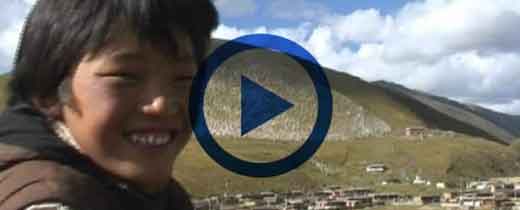

Leave a Reply